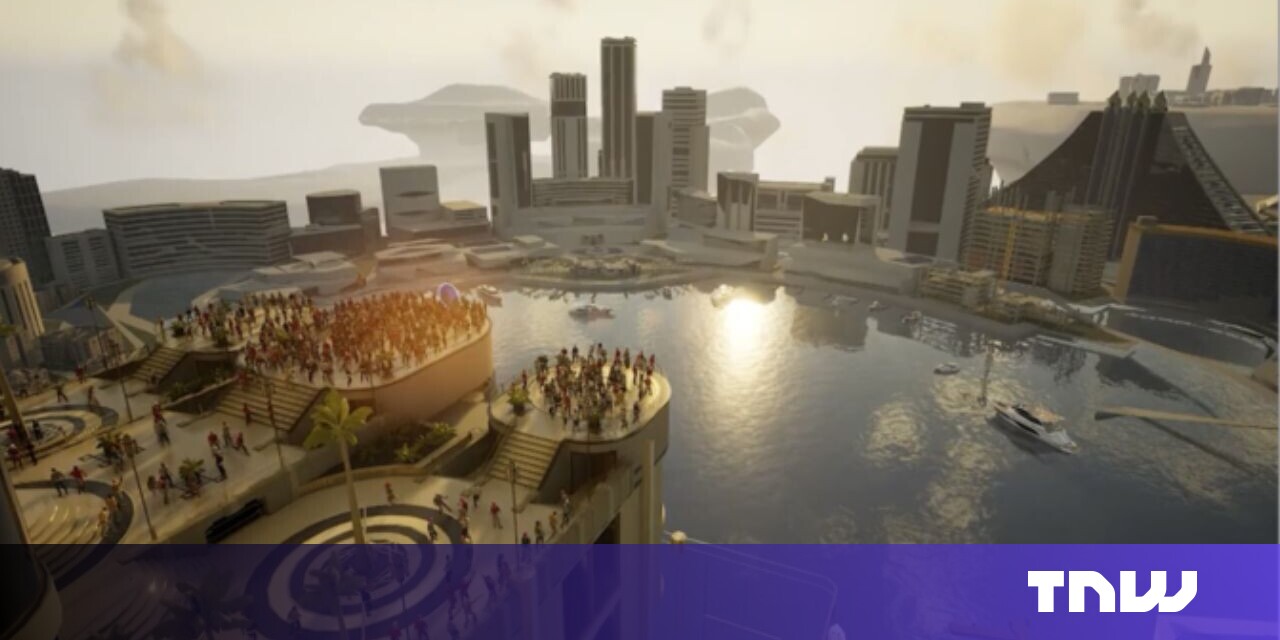Escaping Meta's Walls: The Rise of the Decentralized Metaverse
Editor's Note: The decentralized metaverse is rapidly gaining traction, offering a compelling alternative to centralized platforms. This article explores its key features, benefits, and challenges.
1. Why This Topic Matters
Meta's vision of the metaverse has sparked intense debate. Concerns around data privacy, censorship, and corporate control have fueled the search for alternatives. A decentralized metaverse promises a more user-owned, transparent, and open experience. This article will delve into the technologies driving this movement, highlighting the potential benefits and addressing the hurdles involved in building a truly decentralized digital world. We will examine blockchain technology, interoperability, tokenomics, and the role of community governance in shaping the future of immersive online experiences.
2. Key Takeaways
| Feature | Benefit | Challenge |
|---|---|---|
| Decentralization | User ownership, increased privacy, censorship resistance | Interoperability, scalability, security risks |
| Blockchain Tech | Secure transactions, transparent governance | Technical complexity, energy consumption |
| Interoperability | Seamless movement between virtual worlds | Lack of standardization, technical hurdles |
| Community Governance | User control, democratic decision-making | Potential for conflicts, inefficient processes |
3. Main Content
3.1 Escaping Meta's Walls: A Decentralized Vision
The current centralized metaverse models, primarily championed by Meta, raise concerns about data ownership, platform control, and potential censorship. These platforms act as gatekeepers, controlling access and potentially profiting from user data. A decentralized metaverse aims to disrupt this model, empowering users through ownership and community governance. This shift leverages blockchain technology to create a more transparent and user-centric digital world.
Key Aspects:
- User Ownership: Users own their digital assets (avatars, land, etc.) through NFTs, preventing platform control.
- Open Standards: Decentralized platforms encourage interoperability, allowing users to seamlessly move between different virtual worlds.
- Community Governance: Decisions about platform development and governance are made through decentralized autonomous organizations (DAOs).
- Tokenomics: Cryptocurrencies and tokens incentivize participation and facilitate transactions within the metaverse.
Detailed Analysis:
Each of these aspects is critical for a truly decentralized metaverse. User ownership ensures freedom from platform manipulation, while open standards create a vibrant and interconnected ecosystem. Community governance fosters a democratic environment, and tokenomics drive the economic engine of the virtual world. However, these elements present their own set of challenges, as discussed below.
3.2 Interactive Elements on the Decentralized Metaverse
Introduction: The interactive elements of a decentralized metaverse are its lifeblood. They define the user experience and drive engagement.
Facets:
- Virtual Land Ownership: NFTs allow users to purchase and own virtual land, creating opportunities for commerce and community building.
- Play-to-Earn Games: Decentralized gaming models integrate blockchain technology, allowing users to earn cryptocurrency by participating.
- Decentralized Applications (dApps): dApps offer a range of services and functionalities, from virtual marketplaces to social platforms.
- Metaverse Events: Decentralized platforms can host events and gatherings, creating new opportunities for community interaction.
Summary: These interactive elements are crucial for creating a compelling and engaging experience. However, they also present challenges concerning scalability, security, and user experience.
3.3 Advanced Insights on the Decentralized Metaverse
Introduction: Building a truly decentralized metaverse requires addressing complex technical and societal challenges.
Further Analysis:
- Scalability: Blockchain technology's limitations in handling large transaction volumes require innovative solutions to ensure a seamless user experience. Layer-2 scaling solutions and alternative blockchain architectures are being explored.
- Security: Decentralized systems are vulnerable to various attacks, including smart contract vulnerabilities and phishing scams. Robust security protocols and community vigilance are essential.
- Interoperability Standards: The lack of universally accepted standards hampers seamless interaction between different decentralized platforms. Collaborative efforts are needed to establish common protocols.
- Regulation: The legal and regulatory landscape surrounding decentralized platforms is still evolving, posing uncertainties for developers and users.
Closing: Overcoming these challenges is crucial for realizing the full potential of the decentralized metaverse. Continued innovation and collaboration are necessary to create a secure, scalable, and interoperable virtual world.
4. People Also Ask (NLP-Friendly Answers)
Q1: What is a decentralized metaverse? A: A decentralized metaverse is a virtual world built on blockchain technology, giving users more control over their data and digital assets compared to centralized platforms like Meta's metaverse.
Q2: Why is a decentralized metaverse important? A: It promotes user ownership, greater privacy, resistance to censorship, and fosters a more democratic and community-driven online experience.
Q3: How can a decentralized metaverse benefit me? A: You can own your digital assets, participate in community governance, earn cryptocurrency through play-to-earn games, and interact in a more open and transparent virtual environment.
Q4: What are the main challenges with a decentralized metaverse? A: Scalability, security, interoperability issues, and the evolving regulatory landscape are significant hurdles.
Q5: How to get started with a decentralized metaverse? A: Research different decentralized metaverse projects, create a crypto wallet, learn about NFTs, and explore participating in community DAOs.
5. Practical Tips for Engaging with the Decentralized Metaverse
Introduction: Navigating the decentralized metaverse requires awareness and caution.
Tips:
- Research different platforms carefully.
- Secure your crypto wallet.
- Understand NFT basics.
- Participate in community discussions.
- Stay updated on security best practices.
- Be aware of scams and phishing attempts.
- Explore different dApps and games.
- Learn about DAO governance.
Summary: By following these tips, you can safely and effectively engage with the exciting opportunities presented by the decentralized metaverse.
Transition: The decentralized metaverse is still evolving, but its potential to revolutionize online interaction is undeniable.
6. Summary
The decentralized metaverse offers a compelling alternative to centralized platforms, emphasizing user ownership, transparency, and community governance. While challenges remain, ongoing innovation and collaboration are paving the way for a more open and inclusive virtual world.
7. Call to Action (CTA)
Ready to explore the future of immersive experiences? Dive deeper into the decentralized metaverse and discover the opportunities awaiting you!

